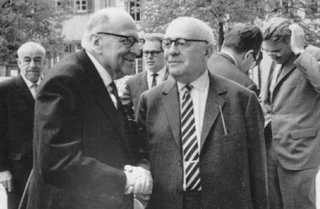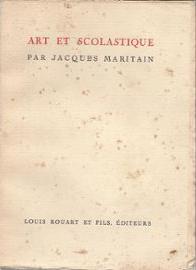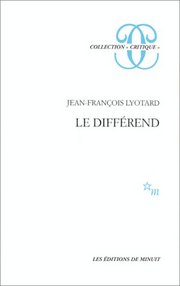 W
WThe Aesthetic Dimension: Toward a Critique of Marxist Aesthetics is a 1977 book on aesthetics by the philosopher Herbert Marcuse, in which the author provides an account of modern art's political implications and relationship with society at large.
 W
WAesthetic Journalism: How to Inform Without Informing is a book by Italian writer, curator and artist Alfredo Cramerotti. Recognising the "blurring of margins between artistic and information practices" as a main feature in contemporary culture, Cramerotti sets out the Who, What, Where, When and How, and Why of Aesthetic Journalism.
 W
WThe Aesthetic Mind: Philosophy and Psychology is a 2011 book edited by Elisabeth Schellekens and Peter Goldie. The contributors try to provide a new understanding of aesthetics and the experience of art based on philosophical reflections and evidence from empirical sciences.
 W
WAesthetic Theory is a book by the German philosopher Theodor Adorno, which was culled from drafts written between 1956 and 1969 and ultimately published posthumously in 1970. Although anchored by the philosophical study of art, the book is interdisciplinary and incorporates elements of political philosophy, sociology, metaphysics and other philosophical pursuits in keeping with Adorno's boundary-shunning methodology.
 W
WAesthetics and Morality is a 2007 book by Elisabeth Schellekens, in which the author provides an account of the main ideas and debates at the intersection of aesthetics and moral philosophy.
 W
WThe Analysis of Beauty is a book written by the 18th-century artist and writer William Hogarth, published in 1753, which describes Hogarth's theories of visual beauty and grace in a manner accessible to the common man of his day.
 W
WArt and Scholasticism is a 1920 book by the French philosopher Jacques Maritain. It is considered his major contribution to aesthetics. According to Gary Furnell, the work "was a key text that guided the work of writers such as Allen Tate, Caroline Gordon, Sally and Robert Fitzgerald, Francois Mauriac, Thomas Merton, John Howard Griffin, Flannery O’Connor and T.S. Eliot." Maritain's Thomist-Aristotelian distinction between Art and Prudence was highly influential on the sculptor Eric Gill, and were developed further in the seminal essay on theological aesthetics, entitled 'Art and Sacrament', by poet and painter David Jones.
 W
WThe Birth of Tragedy from the Spirit of Music is an 1872 work of dramatic theory by the German philosopher Friedrich Nietzsche. It was reissued in 1886 as The Birth of Tragedy, Or: Hellenism and Pessimism. The later edition contained a prefatory essay, "An Attempt at Self-Criticism", wherein Nietzsche commented on this earliest book.
 W
WThe Critique of Judgment, also translated as the Critique of the Power of Judgment, is a 1790 book by the German philosopher Immanuel Kant. Sometimes referred to as the "third critique," the Critique of Judgment follows the Critique of Pure Reason (1781) and the Critique of Practical Reason (1788).
 W
WLes Peintres Cubistes, Méditations Esthétiques, is a book written by Guillaume Apollinaire between 1905 and 1912, published in 1913. This was the third major text on Cubism; following Du "Cubisme" by Albert Gleizes and Jean Metzinger (1912); and André Salmon, Histoire anecdotique du cubisme (1912).
 W
WThe Differend: Phrases in Dispute is a 1983 book by the French philosopher Jean-François Lyotard.
 W
WThe Doors of Perception is an autobiographical book written by Aldous Huxley. Published in 1954, it elaborates on his psychedelic experience under the influence of mescaline in May 1953. Huxley recalls the insights he experienced, ranging from the "purely aesthetic" to "sacramental vision", and reflects on their philosophical and psychological implications. In 1956, he published Heaven and Hell, another essay which elaborates these reflections further. The two works have since often been published together as one book; the title of both comes from William Blake's 1793 book The Marriage of Heaven and Hell.
 W
WDu "Cubisme", also written Du Cubisme, or Du « Cubisme », is a book written in 1912 by Albert Gleizes and Jean Metzinger. This was the first major text on Cubism, predating Les Peintres Cubistes by Guillaume Apollinaire (1913). The book is illustrated with black and white photographs of works by Paul Cézanne (1), Gleizes (5), Metzinger (5), Fernand Léger (5), Juan Gris (1), Francis Picabia (2), Marcel Duchamp (2), Pablo Picasso (1), Georges Braque (1), André Derain (1), and Marie Laurencin (2).
 W
WInner Experience is a 1943 book by the French intellectual Georges Bataille. His first lengthy philosophical treatise, it was followed by Guilty (1944) and On Nietzsche (1945). Together, the three works constitute Bataille's Summa Atheologica, in which he explores the experience of excess, expressed in forms such as laughter, tears, eroticism, death, sacrifice and poetry.
 W
WThe Invention of Art: A Cultural History (2001) is an art history book by Larry Shiner, Emeritus Professor of Philosophy, History, and Visual Arts at the University of Illinois Springfield. Shiner spent over a decade to finish the work of this book.
 W
WLate Modernism: Art, Culture, and Politics in Cold War America is a 2010 intellectual history book by Robert Genter. The author analyzes the history of thought in the postwar United States through prominent scholars, from literary critics and painters to sociologists and public intellectuals.
 W
WLessons on the Analytic of the Sublime is a 1991 book about the philosopher Immanuel Kant's Critique of Judgment (1790), focusing on Kant's description of the sublime, by the French philosopher Jean-François Lyotard. The book received positive reviews following the appearance of its English translation in 1994.
 W
WA Mathematician's Apology is a 1940 essay by British mathematician G. H. Hardy, which offers a defence of the pursuit of mathematics. Central to Hardy's "apology" — in the sense of a formal justification or defence — is an argument that mathematics has value independent of possible applications. Hardy located this value in the beauty of mathematics, and gave some examples of and criteria for mathematical beauty. The book also includes a brief autobiography, and gives the layman an insight into the mind of a working mathematician.
 W
WObservations on the Feeling of the Beautiful and Sublime is a 1764 book by Immanuel Kant.
 W
WThe Origin of the Work of Art is an essay by the German philosopher Martin Heidegger. Heidegger drafted the text between 1935 and 1937, reworking it for publication in 1950 and again in 1960. Heidegger based his essay on a series of lectures he had previously delivered in Zurich and Frankfurt during the 1930s, first on the essence of the work of art and then on the question of the meaning of a "thing", marking the philosopher's first lectures on the notion of art.
 W
WPhilosophy and Conceptual Art is a 2007 book edited by Elisabeth Schellekens and Peter Goldie. The contributors deal with the philosophical questions raised by conceptual art.
 W
WThe Range of Reason is a 1952 book of essays by the Catholic philosopher Jacques Maritain. The text presents a Thomist philosophy regarding religion and morality. It contains a study of Atheism, titled "The Meaning of Contemporary Atheism", which has had a considerable impact on Catholic views of Atheism.
 W
WThe Sense of Beauty is a book on aesthetics by the philosopher George Santayana. The book was published in 1896 by Charles Scribner's Sons, and is based on the lectures Santayana gave on aesthetics while teaching at Harvard University. Santayana published the book out of necessity, for tenure, rather than inspiration. In an anecdote retold by art critic Arthur Danto of a meeting with Santayana in 1950, Santayana was reported to have said that "they let me know through the ladies that I had better publish a book... on art, of course. So I wrote this wretched potboiler."
 W
WThe Story of Art, by E. H. Gombrich, is a survey of the history of art from ancient times to the modern era.
 W
W W
WThe World as Will and Representation, sometimes translated as The World as Will and Idea, is the central work of the German philosopher Arthur Schopenhauer. The first edition was published in late 1818, with the date 1819 on the title-page. A second, two-volume edition appeared in 1844: volume one was an edited version of the 1818 edition, while volume two consisted of commentary on the ideas expounded in volume one. A third expanded edition was published in 1859, the year prior to Schopenhauer's death. In 1948, an abridged version was edited by Thomas Mann.